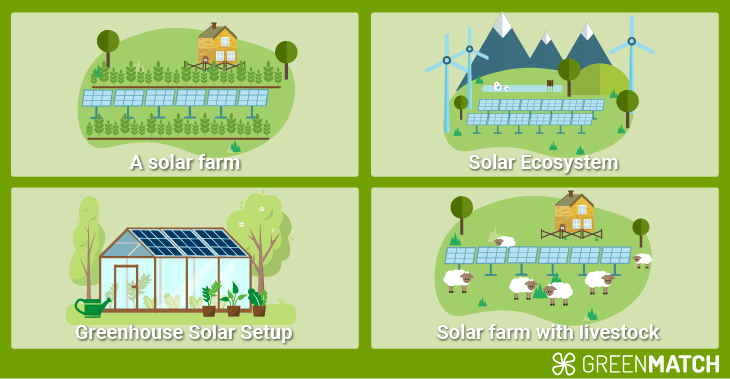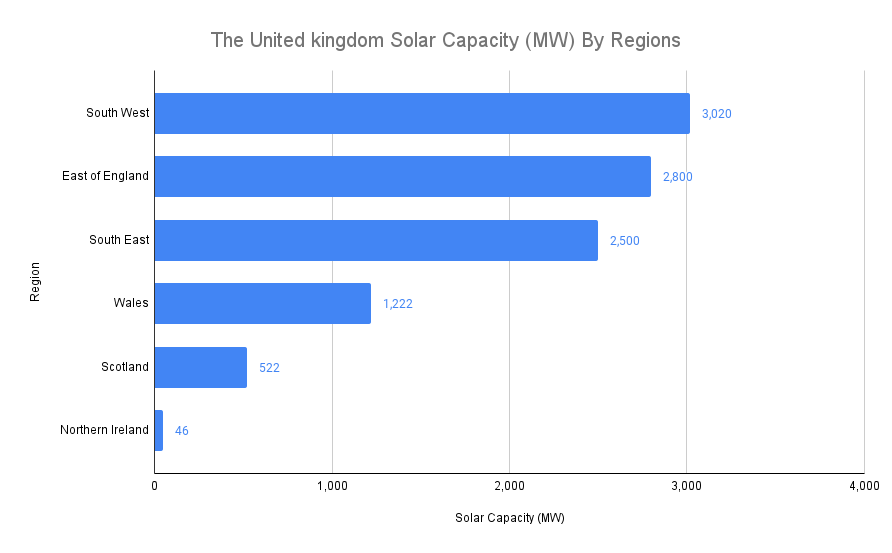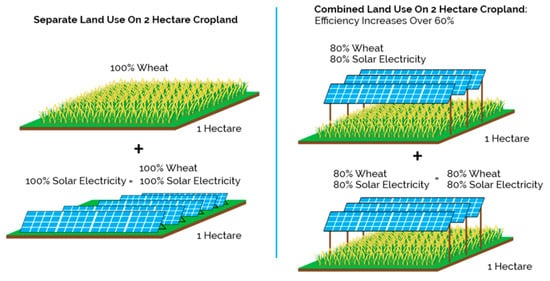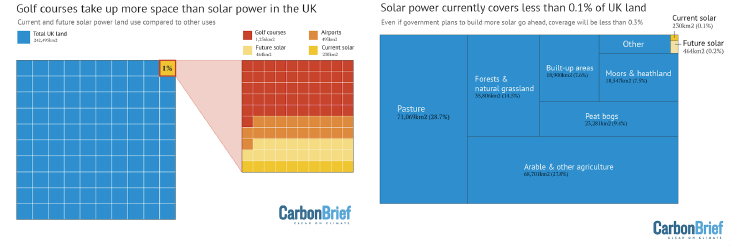
Get up to 4 quotes by filling in only 1 quick form

Slash your energy bills by installing solar panels

We’ve helped over 500,000 homeowners reduce their carbon footprint
- GreenMatch
- Solar Energy
- Solar Panels
- Solar Farms in the UK: Key Trends and Insights
The Solar Landscape in the UK: An In-depth Look at Regional Solar Farms
As the sun rises over the United Kingdom, it illuminates not just the historic landmarks and bustling cities but also an increasingly prevalent feature of the landscape: solar farms. These expansive fields of photovoltaic panels transform how the nation generates power, contributing to a greener, more sustainable future.
The UK’s solar power market is projected to grow from 15 gigawatts in 2023 to 43 gigawatts by 2028, marking an impressive compound annual growth rate of 23.53%.
This surge in solar power is not just a national phenomenon but a story of regional growth and innovation. From the first transmission-connected solar farm in Bristol to the third largest solar farm built on a former rubbish dump in Essex.

This is a significant increase in solar farms, with the largest capable of powering 14,000 homes. This surge in solar energy production is not just a trend but a strategic move towards achieving the UK’s ambitious 2035 decarbonisation targets.
However, the story of solar energy in the UK is about more than just numbers and targets. It’s a complex narrative that involves regional variations, technological advancements, and economic implications. For instance, the efficiency of solar panels can be affected by the distance between the production and supply points.
This article aims to delve into these aspects, providing a comprehensive understanding of the current state of solar energy in the UK and its potential for the future.
So, whether you’re an energy enthusiast, an environmental advocate, or a curious reader, join us as we explore the radiant world of solar farms in the UK.
The Current State of Solar Power in the UK
The United Kingdom has been experiencing significant growth in solar power capacity, with a 5.3% increase in solar PV capacity in 2022, accounting for 19% of the total UK growth. The South West region had the largest share (20%) of the new capacity, primarily from South Farm Solar Park (40 MW).
Regional Distribution of Solar Farms
The UK’s solar power market has been growing at a remarkable pace. As of 2023, the installed base of solar power in the UK is estimated to be 15 gigawatts (GW), and this is projected to nearly triple to 43 GW by 2028, marking a compound annual growth rate (CAGR) of 23.53%.
Solar farms are not evenly distributed across the UK. The South West region has the largest share of new solar photovoltaic (PV) capacity, primarily from South Farm Solar Park, which contributes 40 MW. Cornwall and Wiltshire also have many solar PV sites, representing the installation of substantial solar farms.
In May 2023, the UK saw the first solar farm, a 49.9 MW installation, to feed electricity directly into the transmission network, marking a significant step towards creating a secure, home-grown energy system for the UK.
Factors Driving the Growth of Solar Farms
Several factors are propelling the growth of solar farms in the UK. One of the primary drivers is the rising energy prices in the domestic market, which have nearly tripled since 2000.

Furthermore, agrivoltaics, where solar farms share the use of farmland for solar power generation and growing crops, is gaining traction and could address conflicts over land use. This approach addresses concerns about solar farms taking up valuable productive land and displacing crops. It can potentially drive the growth of solar farms in the country further.
Several factors drive the growth of solar farms in the UK:
- Supportive government policies and demand for renewable energy sources to decrease dependency on fossil fuels and carbon footprints.
- Declining costs of solar technologies and additional subsidies on solar systems.
- Growing energy prices in the domestic market have nearly tripled since 2000.
- Ambitious solar power targets, such as reaching 40GW installed capacity by 2030
| Region | Solar Capacity (MW) | Percentage of Total UK Capacity |
|---|---|---|
| South West | 3,020 | 20% |
| East of England | 2,800 | 18.5% |
| South East | 2,500 | 16.5% |
| Other Regions | 6,780 | 45% |
| Total | 15,100 | 100% |
The South West region leads in solar PV capacity, with other areas following closely. The future of solar farms in the UK looks promising, with ambitious targets set for the coming years.
Regional Analysis
Regional factors can significantly influence solar farms’ efficiency and output. For instance, the sunlight a region receives can affect the amount of electricity a solar farm can produce. Similarly, local climate conditions, such as temperature and cloud cover, can also impact the performance of solar panels.
Regional infrastructure is another important factor. The proximity of a solar farm to the grid can influence the cost and efficiency of electricity transmission. Additionally, local policies and regulations can affect the development and operation of solar farms.
The Top 10 Biggest Solar Farms in the UK
Solar farms and large-scale solar photovoltaic (PV) system applications have rapidly increased across the UK. The UK is home to some of the largest solar farms in Europe.
The largest solar farm in the UK is the Shotwick Solar Park, located in Flintshire, Wales. Commissioned in March 2016, it has a capacity of 72.2 MW and covers an area of 250 acres.
The second largest is the Lyneham Solar Farm in Bradenstoke, Wiltshire, with a capacity of 69.8 MW. Other notable solar farms include the South Lowfield solar farm in North Yorkshire and the Wroughton Airfield (Swindon Solar Park) in Swindon, both with a capacity of 49.9 MW.
| Rank | Solar Farm | Location | Capacity (MW) | Size (Acres) |
|---|---|---|---|---|
| 1 | Shotwick Solar Park | Flintshire, Wales | 72.2 | 250 |
| 2 | Lyneham Solar Farm | Bradenstoke, Wiltshire | 69.8 | 213.3 |
| 3 | Owl’s Hatch Solar Park | Herne Bay, Kent | 49.9 | 200 |
| 4 | Wroughton Airfield (Swindon Solar Park) | Swindon, Wiltshire | 50 | 165 |
| 5 | West Raynham Solar Farm | West Raynham, Norfolk | 49.8 | 225 |
| 6 | Llanwern Solar Farm | Newport, Wales | 49.9 | 260 |
| 7 | South Lowfield Solar Farm | Kirkby Fleetham, North Yorkshire | 49.9 | 231 |
| 8 | Scurf Dyke Solar Farm | Hutton Cranswick, East East Riding of Yorkshire | 50 | 200 |
| 9 | Lark’s Green solar farm | South Gloucestershire | 49.9 | 106 |
| 10 | The Grange solar farm, | Newark, Nottinghamshire | 49.9 | 207 |
Regional Breakdown of Solar Farms
With a growing number of solar farms across England, Wales, Scotland, and Northern Ireland, the UK is making significant progress towards meeting its renewable energy targets and transitioning to a more sustainable future.
Solar Power Generation in England by Region
In England, the South West region leads the way in solar power generation, producing 3.15 terawatt hours of electricity from solar power.
In 2022, solar PV capacity in the UK grew by 5.3%, with the South West region having the largest share (20%) of new capacity. The East of England had 6,470 GW of renewable capacity, with 35% coming from solar PV. The South East also has a high number of solar PV sites.

Solar Farms in Wales
Wales has seen a 1.2% increase in renewable capacity, with solar farms such as Shotwick Solar Park, the largest solar farm in the UK, located in Flintshire, Wales, with a capacity of 72.2 MW and covering an area of 250 acres. Another notable solar farm in Wales is Llanwern Solar Farm, located in Newport, with a capacity of 49.9 MW.
Elgin Energy, for instance, has delivered operational solar farms in all these regions with a total output of more than 230MW.
Solar Farms in Scotland
Scotland has experienced significant growth in onshore wind capacity, with 97% of new capacity in the UK coming from Scotland. However, solar farms are also present in Scotland, contributing to the country’s renewable energy mix.
Solar Farms in Northern Ireland
Northern Ireland is home to the largest solar farm in the region, Bann Road Solar Farm, located in County Antrim. With a capacity of 45.7 MWp, it generates enough energy to power almost 20,000 homes. This 194-acre project in County Antrim is a testament to the potential of solar energy in the region.
Key Trends in UK Solar Farms
The solar industry has witnessed remarkable advancements in recent years, significantly enhancing the efficiency of solar farms. One of the most significant advancements has been in solar cell efficiency. Solar technology has achieved a 31.6% conversion rate from solar energy to electric current, up from the previous 24.4%.
Advancements in Solar Technology
Solar technology has come a long way since the first solar cells were developed in the 1950s. Today, advancements in solar technology are driving efficiency improvements and cost reductions in solar farms across the UK. For instance, bifacial solar panels, which can capture sunlight from both sides, can increase energy yield by up to 20%.
Moreover, an Oxford-based technology firm has developed a new solar panel technology to raise solar power efficiency levels close to 28%. This is a significant leap from the previous efficiency levels of below 20%. With higher efficiency, these panels will also require less area for installation, making them ideal for small rooftops.
The Emergence of Community Solar Farms
Community solar farms are a growing trend in the UK, offering a range of social, economic, and environmental benefits. These projects allow local communities to invest in and benefit from renewable energy, fostering a sense of ownership and engagement in transitioning to a low-carbon future.
Five community energy groups in England and Wales have collaborated to buy seven solar farms, boosting England and Wales’ total capacity of community-owned solar power by 20%. This collaboration will see about £20m in funds being pumped back into communities.
For instance, the Westmill Solar Co-operative in Oxfordshire, the world’s largest community-owned solar farm, generates enough electricity to power over 1,400 homes and has created a wildlife habitat within the solar farm.
Integration of Energy Storage Systems
Integrating energy storage systems in solar farms is another critical trend in the UK. Energy storage systems, such as batteries, can store excess solar power generated during the day for use when the sun is not shining.
The UK’s first transmission-connected solar farm, Larks Green, is a prime example of this trend. The solar farm is co-located with a 49.5MW / 99MWh battery energy storage system, marking a significant step towards creating a secure, home-grown energy system for the UK.
Another example is the Clayhill solar farm in Bedfordshire, the UK’s first subsidy-free solar farm, which includes a 6MW battery storage system. This allows the farm to store and release electricity into the grid when most needed, demonstrating the potential of integrated solar and storage solutions.
| Key Trend | Example | Impact |
|---|---|---|
| Advancements in Solar Technology | Bifacial solar panels and solar tracking systems | Increased efficiency and cost reductions |
| Community Solar Farms | Westmill Solar Co-operative | Social, economic, and environmental benefits |
| Integration of Energy Storage Systems | Clayhill solar farm | Enhanced grid reliability and flexibility |
The Cost of Solar Power in the UK
The cost of solar panels in the UK can range from £5,000 to £11,000, including supply and installation, depending on the size of the system. The average cost of a solar battery is £4,500. Despite the initial investment, solar panels can save between £170 and £565 on electricity bills annually.
| System Size | Annual Savings on Utility Bills |
|---|---|
| 3 kW system | £160 |
| 4 kW system | £270 |
| 5 kW system | £320 |
| 6 kW system | £430 |
The Future of Solar Farms in the UK
The future of solar farms in the UK is promising, with significant growth expected in the coming years. However, careful consideration must be given to environmental and land use issues to ensure this growth is sustainable and beneficial.

Projected Growth of Solar Farms in the UK
The solar industry in the UK has been shining brightly in recent years, with installation records being set and broken. Astonishingly, the solar capacity in the UK had increased from 5,488.6 MW in 2014 to 13,259 MW in June 2019.
UK solar capacity is expected to increase from 2,711 MW to 15,674 MW by early 2024. By 2030, some projections suggest that solar energy could account for as much as 20% of the UK’s electricity generation.
This is seen in the government’s proposal to increase solar farm installations in the country, which has sparked concerns over food security, with farmers and solar advocates clashing over land use.
Are Regional Trends Viable?
Regional trends in solar farms in the UK show that Cornwall and Wiltshire continue to have large numbers of solar PV sites with correspondingly high capacity and generation, representing the installation of large solar farms.
These are followed closely by Aberdeenshire, Dorset, and Leeds, which have many solar PV sites.
What Are the Environmental and Land Use Considerations?
The construction of solar facilities on vast land areas imposes clearing and grading, resulting in soil compaction, alteration of drainage channels, and increased erosion. However, research has shown that solar parks can alter the local climate, measuring cooling off as much as 5 degrees centigrade under the panels during the summer.

Despite the claims, ground-mounted solar panels currently cover just 0.1% of all land in the UK. Government plans to scale solar power in line with its net-zero target are expected to increase significantly to just 0.3% of the UK’s land area. This is the equivalent to around 0.5% of the land currently used for farming – and roughly half of the space taken up by golf courses.
What are the prospects of Solar Farms in the UK?
Solar farms have been found to contribute to biodiversity. For instance, the Eveley Solar Farm, one of the largest in the UK, has seen an increase in biodiversity since its construction due to grazing management and a reduction in soil erosion.
In addition, most solar farms in the UK are built on 3b sites. Changes to land categorisation could impact the viability of new solar energy projects, making more than half the land typically used for solar farms off-limits.
Future growth in the UK’s solar energy industry will lead to further technological advancements. Innovations such as windows that capture and convert sunlight into solar energy and space-based solar power are being explored.
Also, other innovations in solar technology, such as higher efficiency and bifacial modules, are making solar energy more efficient and economical. These advancements are expected to continue, making solar power more accessible and attractive.
In conclusion, while there are challenges to overcome, the future of solar farms in the UK is bright, driven by government support, public demand, technological advancements, and the need for sustainable, renewable energy sources.

Inemesit is a seasoned content writer with 9 years of experience in B2B and B2C. Her expertise in sustainability and green technologies guides readers towards eco-friendly choices, significantly contributing to the field of renewable energy and environmental sustainability.
 We strive to connect our customers with the right product and supplier. Would you like to be part of GreenMatch?
We strive to connect our customers with the right product and supplier. Would you like to be part of GreenMatch? 